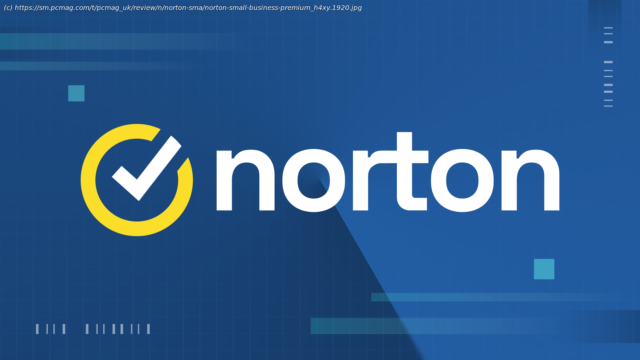With Small Business Premium, you get Norton’s powerful device-level security along with a collection of useful features specific to protecting your business and its data.
The Norton name has been around for as long as the IBM PC (and PCMag). When you’re taking a big step like starting a small business, relying on a long-standing company like Norton for your security can be a smart move. Norton Small Business Premium protects your company’s computers with award-winning antivirus technology and useful business features, including 24/7 support and brand identity protection. That said, Bitdefender Ultimate Small Business Security also offers this functionality and provides additional business-specific features, including support for mobile devices, digital identity protection for employees, and asset exposure alerts for your company, making it an Editors‘ Choice winner. And if remote management is your primary concern, Avast Premium Business Security is our other top pick.How Much Does Norton Small Business Premium Cost?
When your business gets big enough, you need an IT department to handle security. How big can you get before that’s needed? There’s no set size, but one possible measure is whether you still know the names of all your employees. Most small business suites seem to aim for a maximum of 20 to 25.
With Norton Small Business Premium, pricing is simple. You can pay $299.99 per year to cover 10 employees or $399.99 to cover 20. Do note that these subscriptions cover two devices per employee. Bitdefender, too, has subscriptions based on the number of employees, with two devices per employee and from one to five licenses for server protection. For $799.99 per year, your Bitdefender subscription can cover 25 employees and 50 devices.
At $799.99 per year for 20 devices, Malwarebytes for Teams looks twice as expensive as Norton. But since Norton’s offer is 40 devices spread among 20 employees, the difference is actually greater. As for ESET Small Business Security, you’d pay $410 per year for 20 devices or $512.50 for 25. ESET, too, costs more than Norton on a per-device basis.
Various mergers over the last few years have led to Avast Premium Business Security, AVG Internet Security Business Edition, and Norton all belonging to the same parent company, Gen Digital. These three even share the same antivirus engine. However, pricing for the business security suites couldn’t be more different. Avast and AVG cover from 1 to 999 devices, with a per-device rate that diminishes as the number of devices goes up. To match Norton’s 40 devices, you’d pay $1,697.60 per year for AVG or $1,749.20 for Avast. Both Avast and AVG max out at around $23,000 for 999 devices.
One more thing: Provided you’ve shown your commitment by enabling automatic renewal, Norton reciprocates with its virus protection promise. If malware gets past your Norton protection, the support team will dig in and manually eliminate the infestation. In the rare event that support fails, you get a refund.Getting Started With Norton Small Business Premium
As with Norton’s consumer products, your journey starts when you register your purchase with the My Norton portal online and download the installer. After installation is complete, the suite goes through an initialization sequence to get all the features running correctly.
Norton includes dark web monitoring for each employee. Initially, it just monitors your primary email, but you can add more information, up to five email addresses, five phone numbers, and five credit cards. There’s also business-specific dark web monitoring, which I’ll discuss below.
Next, you activate the 500GB of cloud storage for backup that comes with your subscription. That’s a simple matter of clicking the big Activate button. Right away, Norton starts backing up your Documents, Desktop, Pictures, and Music folders (excluding videos). Naturally, you can fine-tune what gets backed up later. After backup is squared away, Norton asks for your approval to automatically enable the VPN when you connect to an untrusted network.
It’s unlikely you’d buy this suite to protect just one PC. The initialization scheme encourages you to protect more devices, with a page that makes it easy to share an installation link by email or text, or copy it into some other medium. For mobile devices, you can snap a QR code. Finally, Norton prompts you to set up the password manager, which I’ll discuss below. You can skip any of these setup steps and return to them by clicking the Set Up Protection link in the main window. When you’ve accomplished all five steps, that link disappears.
The suite’s main window looks very much like that of the standalone antivirus. A simple menu down the left provides these options: Home, Security, Performance, Privacy, Search, and Settings. Along the right side is a panel that can either display current alerts or provide Control Panel access to important features. And in the middle, you see the current security status and a summary of devices used, plus a simple button to run a smart scan.Features Shared With Norton AntiVirus Plus
Antivirus protection is at the core of every security suite, whether aimed at consumers or small businesses. Naturally, this suite includes all the features found in Norton AntiVirus Plus, which is itself an Editors’ Choice. Please read that review for all the details; I’ll provide a summary here.
I closely follow five antivirus testing labs around the world that contribute to the greater good by testing popular antivirus apps and reporting their findings. Oh, they don’t do it just out of goodness; they get paid by the antivirus companies whose technology they evaluate. The number of labs testing a given antivirus gives a rough idea of its importance. Norton, like Avast, appears in the latest reports from all five labs. Yep, it’s important.
Norton earned perfect scores from AVLab Cybersecurity Foundation, AV-Test Institute, MRG-Effitas, and SE Labs. With AV-Comparatives, an antivirus that does well enough to pass gets Standard certification, while those that go beyond the minimum can receive Advanced or Advanced+ certification. In three recent tests by this lab, Norton earned one apiece of Standard, Advanced, and Advanced+ ratings.
With some labs providing named success levels and others reporting in numbers or percentages, comparison can be tough. I’ve devised an Excel spreadsheet to map all the results onto a 10-point scale and combine them into an aggregate score. That calculation yields 9.6 points for both Norton and Avast.
ESET doesn’t show up in current reports from SE Labs, but the other four assigned it the maximum possible score, yielding a perfect 10-point aggregate score. Also tested by four labs, Bitdefender and McAfee turned in an impressive 9.8-point score, while Microsoft lagged with 8.8. AVG and Malwarebytes also reached a 10-point aggregate, but their scores come from just two labs each.
Few security apps boast a five-lab sweep like Norton, but more than a third of those I track exhibit a different kind of sweep—no results at all. About another sixth show up in just one lab’s test results. With or without lab results, I can always rely on my hands-on testing. I put every antivirus through a series of tests that give me useful scores for comparison and let me experience the app doing its job.
My malware blocking test starts when I bring the antivirus’s attention to a collection of malware that I gathered and curated myself. For some, just opening the folder containing samples is enough to trigger a scan. Others scan when a file is launched or moved. And for others, Norton among them, every downloaded file gets vetted by real-time antivirus. For testing, I downloaded all my samples from cloud storage.
Norton detected and eliminated two-thirds of the samples during download. That’s helpful, but others have detected more. McAfee+ and UltraAV, notably, wiped out every sample in this first phase, and Malwarebytes managed 99%. With most apps, the initial culling leaves behind anywhere from a few to a few dozen files. To complete my test, I launch those files and note how the antivirus reacts.
Overall, Norton detected 97% of the samples and scored 9.7 out of 10 possible points. Avast and AVG earned precisely the same score, a strong reminder that the three products use the same antivirus engine. Malwarebytes beats this trio by a hair, with 99% detection and 9.9 points. At the top, with a perfect 10, are McAfee and UltraAV.
Given that sourcing and analyzing a new set of malware takes weeks, I necessarily use the same samples for months at a time. To see how each antivirus fends off the latest malware, I start with a feed of malware-hosting URLs supplied by testing lab MRG-Effitas. For each sample URL, I record whether the security app blocks access to the dangerous URL, quarantines the malware payload, or sits idly without acting in your defense. I keep at it until I have around 100 data points.
Along with UltraAV and Aura, Norton managed 99% protection, a feat beaten only by Avira Prime, Guardio, and Sophos Home Premium, each with a perfect 100% score.
Looking at other small business suites, most at least topped 90%. ESET, Avast, AVG, and Bitdefender reached 95%, 94%, 93%, and 92% respectively. With just 83% protection, Malwarebytes is an outlier.
The same browser security that flags malware-hosting pages also serves to identify phishing websites. A phishing site masquerades as a legitimate, secure site of some kind, anything from banking to dating. If you type your username and password into the fake site, you’ve handed over your account to the phishing fraudsters.
In a business setting, the consequences of phishing are amplified. It’s one thing if fraudsters gain control of your Club Penguin account, but quite another if the compromised account controls HR or payroll for your small business.






